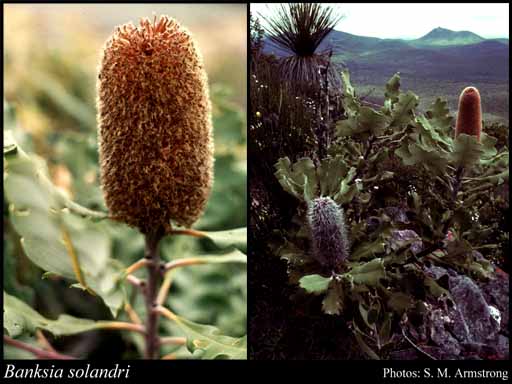- Reference
- Prodr. Suppl. 36 (1830)
- Conservation Code
- Priority Four
- Naturalised Status
- Native to Western Australia
- Name Status
- Current
Non-lignotuberous shrub, 0.5-4 m high. Fl. red-brown/brown-purple, Sep to Dec. Rocky soils or sand over sandstone or quartzite. Rocky slopes.

Scientific Description
Shrubs, 1.5-3.5 m high; branchlets glabrous or hairy. Leaves petiolate, alternate, 95-300 mm long, 55-90 mm wide, hairy; petiole 25-60 mm long; lamina flat, clearly widest above the middle, once divided, pinnately divided, shallowly divided, teeth pointing outwards, with 4-8 lobes on each side, the margins flat. Inflorescences villous (with soft, shaggy, weak and straight hairs), yellow or brown, hairy. Perianth 13-15 mm long, glabrous, without awns; pistil 20-28 mm long, curved, style glabrous. Follicles hairy, hirsute (with long, rough and coarse hairs), elliptic, 10-18 mm long. Flowers in September, October, November or December. Occurs in the South-west (SW) Botanical Province(s), in the Esperance Plains (ESP) IBRA subregion(s). : Conservation code Priority Four (P4).
Distribution
- IBRA Regions
- Esperance Plains, Jarrah Forest.
- IBRA Subregions
- Fitzgerald, Southern Jarrah Forest.
- Local Government Areas (LGAs)
- Cranbrook, Gnowangerup, Plantagenet.